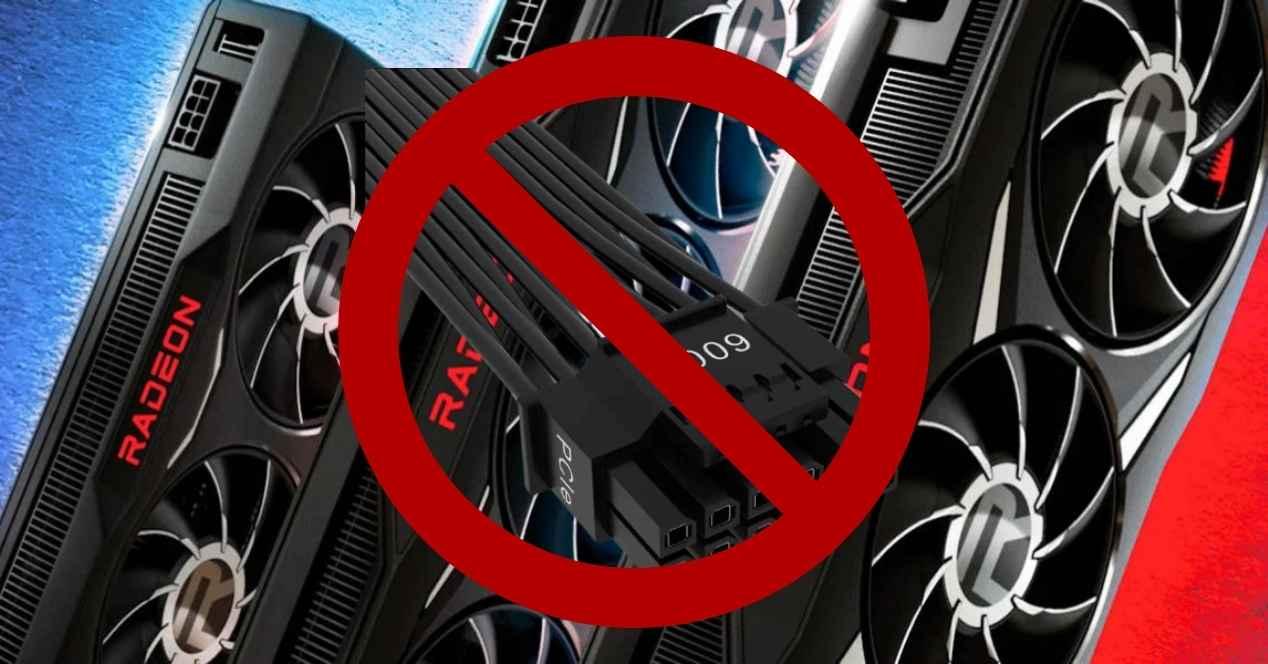One of the most controversial issues with NVIDIA’s peak performance graphics cards is the fact that they use the 12+4 pin connector which can give them up to 600W of power on its own, not including the supplied base by the own PCI Express . Since this is a new standard, we wondered if AMD would follow the same path. However, they told us that their next graphics cards with an architecture RDNA 3 will not use 12vVHPWR as a power connector.
AMD has one week left to present its next-generation graphics cards, based on the RDNA 3 architecture and being the first domestic GPUs to be presented in a disaggregated way, with the chip divided into several which together will perform the function of a . However, one question we had was if Lisa Su was going to use the new 12+4 pin connector, at least with their more powerful graphics card, however, they confirmed that would not be the case. The RTX 40 competitors will therefore not have such a significant impact on the electricity bill.
AMD will not use the 12VHPWR connector on its RDNA 3 GPUs
This therefore means that the maximum consumption we can expect is that corresponding to 2 x 8-pin cables with the 75 W of the PCI Express port itself. For what they would not increase the consumption of their graphics cards compared to the current generation. Which means that if we make a comparison by consumption within the range, the RX 7000 based on RDNA 3 will not have an equivalent to the RTX 4090. And how do we know all this? Well, thanks to a tweet from Scott Herkelman, vice president of Radeon, AMD’s graphics card division.
Scott Herkelman
@sherkelman
@KyleBennett @NVIDIAGeForce @Radeon Radeon RX 6000 series and upcoming RDNA 3 GPUs will not use this power connector.
October 25, 2022 • 5:34 PM
The information is therefore completely official and this with the statement that its future generation of graphics cards will have a power per watt 50% higher than its current graphics cards, as this allows us to have a rough idea of what we can get expect in terms of theoretical computing power from AMD’s next generation.
What can we expect from the Radeon RX 7900 XTX?
Taking into account the consumption of the current generation of AMD and the promise in terms of per formance jump, we can extrapolate the following data:
- If AMD maintains consumption in the next generation, 335 W for the high end, and extrapolating the higher efficiency of the RX 6000, then the most powerful graphics card would have a Power of 38.6 TFLOPS compared to 23.8 TFLOPS of the RX 6950 XT. which is about one 63% performance per additional watt.
- We will see significant changes in the architecture, the jump will not only be brute force.
- Increased floating point units from 64 to 128 per core.
- Out-of-order execution or on-the-fly thread reordering as already implemented by Intel ARC and NVIDIA RTX 40.
- Improved Ray Tracing system compared to that of the RX 6000.
With information still unconfirmed, the most powerful RDNA 3 graphics chip is said to have 12,288 compute units spread over 96 total compute units. A figure above the RTX 4080 with 9728 compute units spread over 76 SMs. Additionally, AMD’s unbundled chip will have a 384 bit GDDR6 buswhich will allow you to have up to 24 GB of video memorycorresponding in this case to the RTX 4090 and the RTX 3090 Ti and bringing with it 192 MB of Hidden Infinity.
Which translated for the average user, we’re talking about much higher performance than the RTX 3090 Ti and RTX 4080, but with much higher efficiency, as we won’t see the 12VHPWR connector in RDNA 3. However, in When it comes to raw power, NVIDIA will continue to have the lead.







